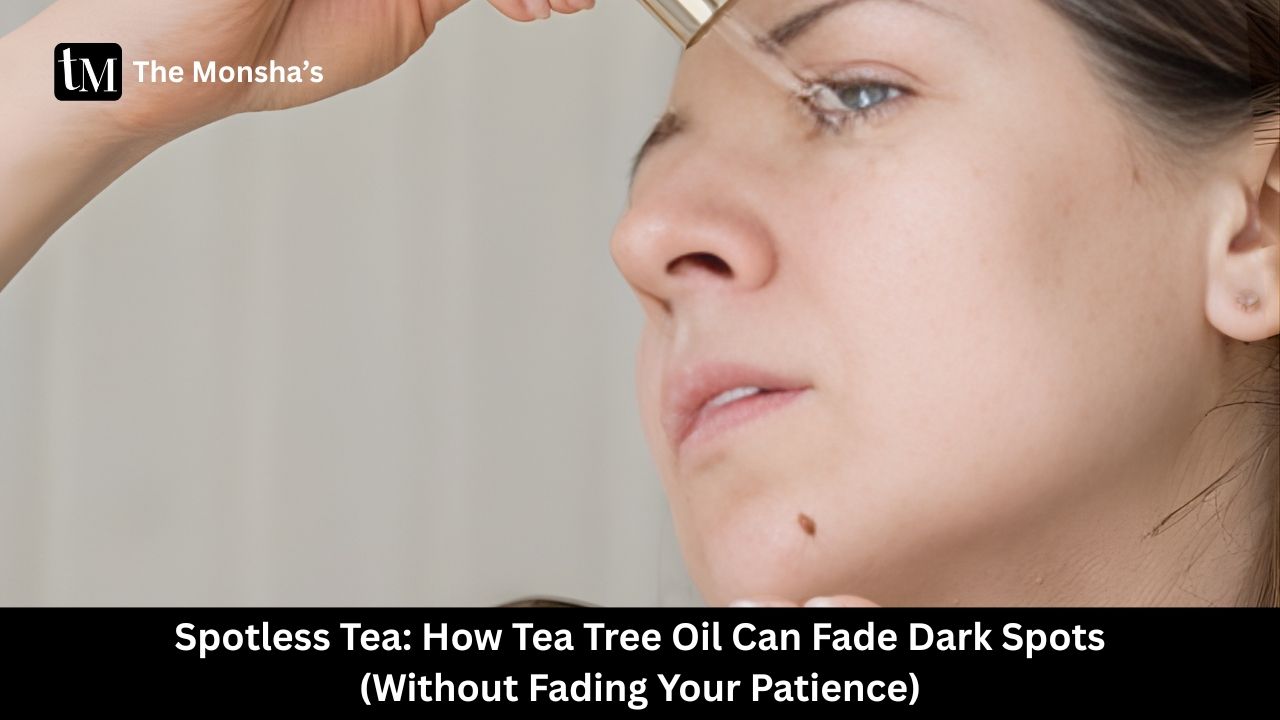
“Daag ache hote hain” might work for detergent ads, but on your face? Not so much 😅.Lagta hai jaise har pimple ka dushman dark spot ban kar baitha ho. And now you’re scrolling for “natural fixes” at 1 AM while sipping chai. Guess what—tea tree oil may actually help you out, but only if you know the right way to use it.
This is your no-BS guide to using tea tree oil on dark spots—based on science, practical hacks, and my own chai-fuelled, skincare-obsessed experiments.

Tea tree oil is more prevention + gentle support than miracle fade-cream—but with consistency, it can be a real MVP in your routine.
Dark spots (post-inflammatory hyperpigmentation) form when your skin’s pigment cells go into overdrive after inflammation, acne, or UV damage. That’s why your breakouts often leave a “souvenir” mark behind. The deeper the inflammation, the deeper the pigment.
UV rays, hormonal changes, and skin picking only make things worse. So prevention is key—along with gentle brightening ingredients.
Tea tree oil has been widely studied for its antimicrobial and anti-inflammatory effects—especially against acne bacteria. By reducing acne and calming inflammation, it indirectly lowers the risk of new dark spots forming.
Some small studies and dermatologist reviews also highlight its antioxidant potential, which can support skin healing. But—important reality check—direct evidence on fading established pigmentation is limited. That means it’s better for newer marks and prevention, not old, stubborn melasma-type spots.
Avoid relying on it as your only treatment for deep scars or long-standing dark patches.
Apply diluted oil behind ear or on inner arm for 24 hours. If redness or itch occurs, skip.
Mix 1 drop of tea tree oil with 9 drops of a carrier oil like jojoba or grapeseed. Dab directly on spot at night after cleansing.
Cleanse → pat dry → dab diluted tea tree oil on dark spot → follow with moisturizer. Use 3–4 nights a week.
Blend a drop of diluted tea tree with aloe vera gel for a cooling mask. Or layer over niacinamide serum (if your skin tolerates it).
If DIY freaks you out, buy a reputable tea tree gel at ~2–5% concentration designed for face use.

Remember: natural ≠ harmless.
“I started using diluted tea tree oil after every breakout. My marks didn’t vanish overnight but after a month, they healed faster and didn’t turn into deep brown patches.”
“I mixed tea tree with aloe gel as a night mask—calmed my redness and new spots faded quicker.”
These are common experiences—but everyone’s skin behaves differently.
No—always dilute. Pure oil can burn or irritate skin.
Expect at least 4–6 weeks of consistent use for newer spots.
Not likely. Consider dermatologist treatments.
You can layer, but not mix in the palm. Apply vitamin C first, let it absorb, then dab diluted tea tree.
Only when patch-tested and diluted. Otherwise, skip.
Tea tree oil is not a magic wand for all pigmentation, but it’s a solid, natural sidekick for preventing and softening new dark spots. Think of it as a preventive measure, not a cure-all. Combine it with sunscreen, gentle exfoliation, and patience, and your skin will thank you.
Glow is brewed slowly—like chai on a low flame—not in an instant packet. ☕🌿